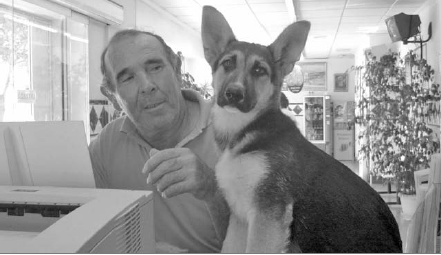Canine leishmaniosis is an insidious disease usually occurring in hotter climates and is often not familiar to people coming from colder locations. However, it is a severe disease (often fatal), so if you bring a dog to Spain (even just for a holiday) or intend to buy a dog,
there are measures you should take to help protect your dog.
Transmission of leishmaniosis?
By far the most common method of a dog catching leishmaniosis is by transmission from the bite(s) of the blood sucking female sand fly. These sand flies can bite an infected animal and carry the disease, when the sand fly then bites another animal the parasite is transmitted. The name ‘sand fly’ implies a beach type location, but this is not so, they will be found predominantly in the countryside, rural greenlands and gardens. These types of insects are most active from May to October between the times of sunset to sunrise, so these should be considered the most dangerous periods.
Indications of canine leishmaniosis
Typically there are a wide range of symptoms indicating the disease. Hair loss and poor condition, especially in the muzzle and eye areas, but progressively spreading to the rest of the body. Skin will become dry. Ulcers and general skin sores may develop particularly around the head and legs. Weight loss can become very severe, with the appearance of malnutrition, even though appetite for food is good. All conditions are progressive and later indications may also appear including the dogs claws becoming very long and twisted.
Veterinary diagnosis
An experienced vet in an endemic area will recognize the visual indications, however diagnostic confirmation is required. Bone marrow or
lymph sample may be examined microscopically, blood analysis will identify antibodies or DNA markers of the parasite present in the blood.
Treatments for an infected dog
In clinical terms, there is presently no cure for this disease. However, if a dog is diagnosed in the early stages, there is reasonable expectation that the disease can be successfully controlled. Once infected, a dog will probably carry the parasite for life, although once properlytreated any remaining parasitic levels should be extremely low and there will always be a chance of relapse. It is important the treatment and regular
supervision is undertaken by a qualified vet as initial treatment can take weeks and needs to be closely monitored.
Preventative measures
As the female sand fly usually bites between dusk and dawn and also habitats dark areas around litter and rubbish, avoid taking dogs for walks at these times and places. ‘House’ dogs are safer and at reduced risk, but screens and nets will provide added protection where windows and doors are left open. Periodically spraying of anti-mosquito products around your dogs bed/sleeping area will also help. The use of Scalibor collars releases an active ingredient onto the dog’s skin which will last for up to six months and tests have shown an 80-90% increase in protection from sand fly bites. Ex-spot can also be applied (once a month). Importantly, keep a good hygienic environment for your dog, avoid plants, flowers and rubbish in the areas your dog frequents. Maintain an optimal immune system in your dog: It can be confidently assumed that 100% of dogs in our area have been bitten by sand flies, but only a few will carry the transmittable parasite, this is
due to most dogs having resisted the disease in their immune system. The immune system is reinforced with good ‘premium’ nutritional foods with a good balance of protein, fat, vitamins and trace elements allows our dog’s defence system to deal with this and other diseases. Keeping your dog free from internal (worms, tapeworms) and other external parasites (fleas, ticks, mites, etc) will also ensure your dogs immune system is in the best state to deal with diseases.
Early diagnosis: The period of incubation of the parasite is very long (months or years), so many dogs that have not manifested symptoms
can still be incubating and transmitting the disease. Therefore it is recommended that a blood test with a good immunosorbent assay (ELISA) be performed every 6-8 months. Blood tests for detection of antibodies in all dogs, even if apparently healthy, are important, because if diagnosed in early or initial stages your dog could be properly treated and live a full happy/healthy life.
This article was published in Costa Blanca News.



